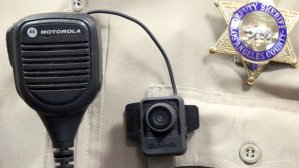The Fourth and Fireworks: A Safety Guide
by Bell Law Firm
image found at: http://petapixel.com/assets/uploads/2009/07/fwfintro.jpg
If you’re like many Tennesseans, this upcoming July 4th will involve “the 3 F’s:” food, family, and of course, fireworks. The simple fact is, few items encapsulate a National holiday more than fireworks do for July 4th. However, that does not mean they are legal where you live. So, before you bulk-buy roman candles, make sure you are aware of your areas local laws regarding the sale, possession, and use of fireworks.
After taking a quick look at firework laws for Tennessee, it’s easy to tell the situation is an absolute mess. Of the 95 counties in Tennessee, all have seemingly managed to create individual laws (or ordinances) for their specific county. In Knox County, for example, it is illegal to purchase, sell, or shoot fireworks. In Loudon County, fireworks are legal to sell but cannot be shot in the city. Some counties permit the use of fireworks year-round, some only from the end of June until mid-July, some only on July 4th, and in some not at all.
For Knoxville residents that purchase fireworks each year, you may be asking yourself how this is possible if they are illegal to sell in Knox County. Enter Lenoir City. There, it is legal to buy, sell and shoot fireworks, which explains the ever-present firework businesses off I-40 near the I-75 split, right past Knox County lines. Avoiding the obvious debate about whether this defeats the purpose of firework laws altogether, the penalty for their use remains in effect: Class 1 misdemeanor with a fine of up to $1000 and/or six months in jail.
Amidst all this confusion, Tennessee state law remains clear: under Tennessee Code § 68-104-115, the state fire marshal is required to seize and destroy all non-Class C common fireworks, now known as “1.4G fireworks”. Since this law is clear, local firework stores will not carry illegal fireworks. But legally purchased fireworks may still get you in trouble, so here are some tips to avoid ruining your independence day with a costly citation.
- Be Careful. Be Careful. Be Careful. This cannot be stressed enough. In 2013, fireworks accounted for at least 11,400 injuries. An estimated 65 percent of these injuries occurred on the 4th alone. If you plan on shooting off fireworks with your kids, make sure you have control over the situation.
- Find an open area. According to statistics in 2011, close to a quarter of all house fires in July are a result of fireworks. Being careful involves getting away from property, trees and bushes that can quickly catch fire from an errant bottle rocket. These firework house fires killed 8, injured 40, and resulted in over 32 million in property damage in 2011 alone. Be smart and safe.
- Be Courteous. Often, police are called to residences because of loud noises – from both people and fireworks – that continue well into the night. Several counties have noise ordinances that go in effect after 10 p.m. or midnight, even on Independence Day. If you want to avoid angering your neighbors and potentially bringing the police to your house, make sure the fireworks are okay with them beforehand.
- Have Fun. Fireworks or not, the 4th is a fun event for persons of all ages. If fireworks are legal in your area, following simple safety precautions ensure that you can avoid being an injury statistic and still have a blast. Yes, that pun was intended.
This article is geared towards firework information and in no way endorses illegal activity of any kind. If you or a loved one is injured by an errant firework or encounter any other legal issues over the holiday weekend, please contact our office. We will have attorneys on stand-by over the holiday weekend.
James A.H. Bell is the founder of Law Offices of James A.H. Bell, P.C. in Knoxville, TN. Mr. Bell has over 40 years of experience in both criminal and civil litigation and may be contacted by calling 865-637-2900 or by email at jbell@jamesahbell.com. The Bell Law Firm: Client Focused, Court Room Proven.



 Officer conducting a search using a “dog sniff”
Officer conducting a search using a “dog sniff”